Blog A Comparison: Tyvek vs Custom Silicone Wristbands
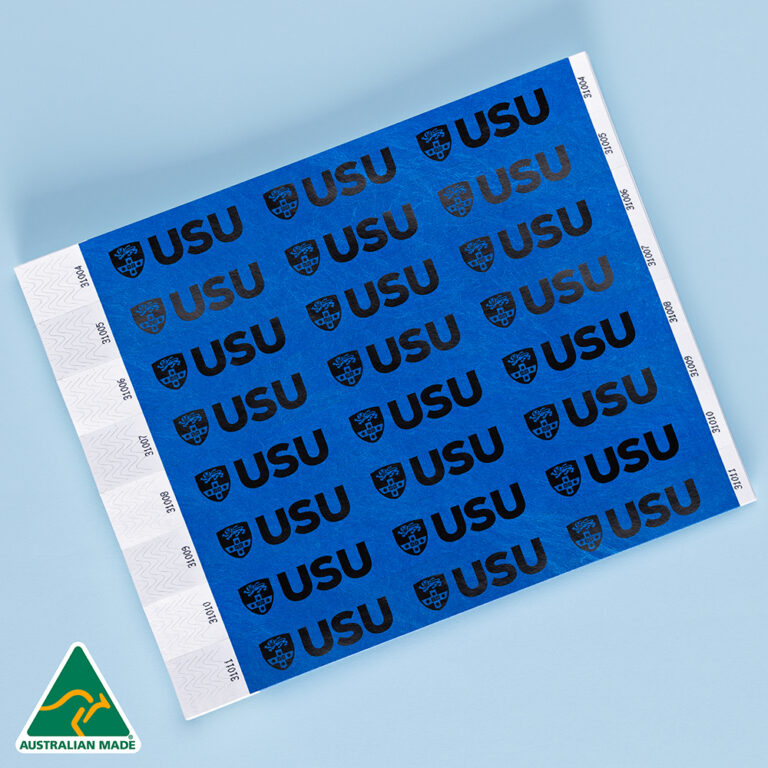
Custom silicone wristbands and Tyvek wristbands are both used for events and promotions. Tyvek wristbands are disposable and used for single-day events and event control. They are generally cheaper. Silicone wristbands are reusable and designed for long-term promotions.
Tyvek wristbands are made of high-density polyethylene, which gives them a papery yet tear-resistant form. Silicone wristbands are made from a durable elastomer, making them flexible and giving them a lifespan of many years.
Tyvek wristbands are a relatively new invention and have been used in many ticketed events for identification, access control, and crowd management. Whereas silicone wristbands are popular marketing tools for businesses and fundraising campaigns.
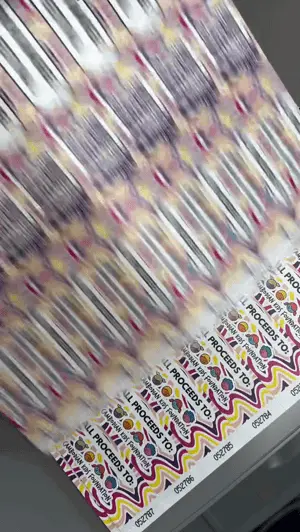
Tyvek is made of high-density polyethylene fibres, which are used to create a fabric-like structure that almost resembles paper. The polymers are tightly bound, making it uniquely tear-resistant but also flexible and thin.
The synthetic materials used in Tyvek are recyclable and non-toxic to human skin.
The chemical structure of silicone rubber contains silicon and oxygen molecules, which are then added to organic groups of molecules. This structure allows silicone to be flexible, elastic and resistant to wear and tear.
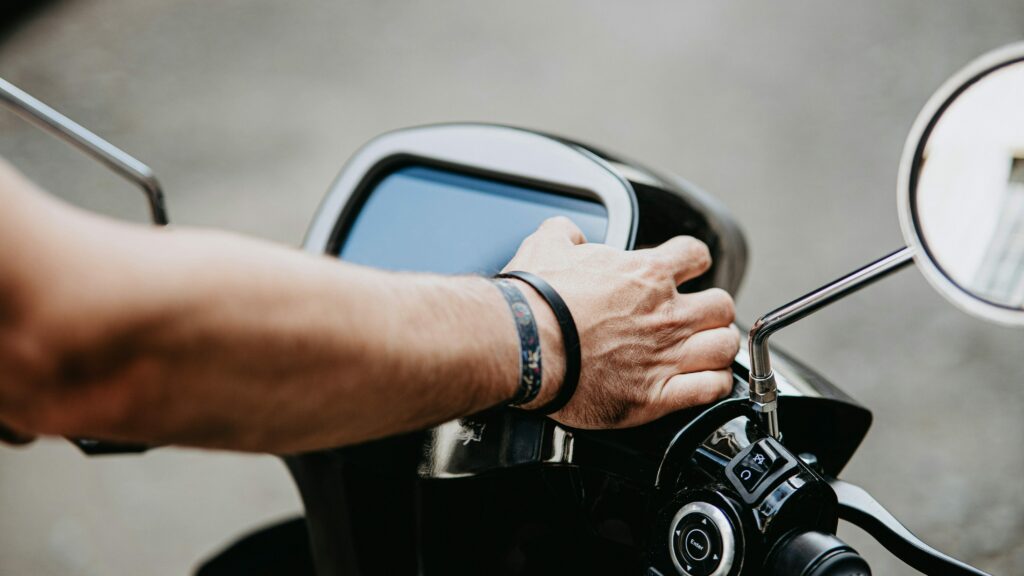
One of the biggest differences between Tyvek wristbands and silicone wristbands is their durability. This is something you want to think about when planning your event, as both wristbands have varying life spans.
Tyvek wristbands are great for one-off events such as races, festivals or entry into a venue, as they last well for a few days to a week.
Thanks to its natural tensile strength, Tyvek wristbands are designed to be tear-resistant. This makes them great for events where wristbands act as proof of ticket, as they last throughout the day or multiple days if required.
Tyvek is also naturally UV-resistant and lasts anywhere from 6 months to a year when not worn. After a year, some physical properties, especially colour, will likely fade due to environmental factors.
Silicone has excellent wear resistance, as well as great tensile strength and UV resistance. This means that the wristbands will last for many years, even when worn daily.
Silicone’s natural durability makes it great for events, fundraisers and advertising purposes. If you want to pop your logo on a wristband that will be worn for years, silicone is the way to go.
These durable wristbands are designed to be slipped off, so they are less suitable for use as modes of ticketing and better used for advertisement or as souvenirs for your event.
Both Tyvek and silicone are heat-resistant. Whilst Tyvek does become brittle at high temperatures, it is unlikely they will be exposed to such high temperatures in settings where they are worn by people.
Silicone is more resistant to UV exposure in comparison to Tyvek. Designs on Tyvek are more prone to fading in the sun, especially when exposed for long periods.
Unfortunately, Tyvek is not biodegradable and is designed to be used for single events only. Whereas silicone can be reused and is in nature non-toxic. However, they can both be recycled at certain plants.
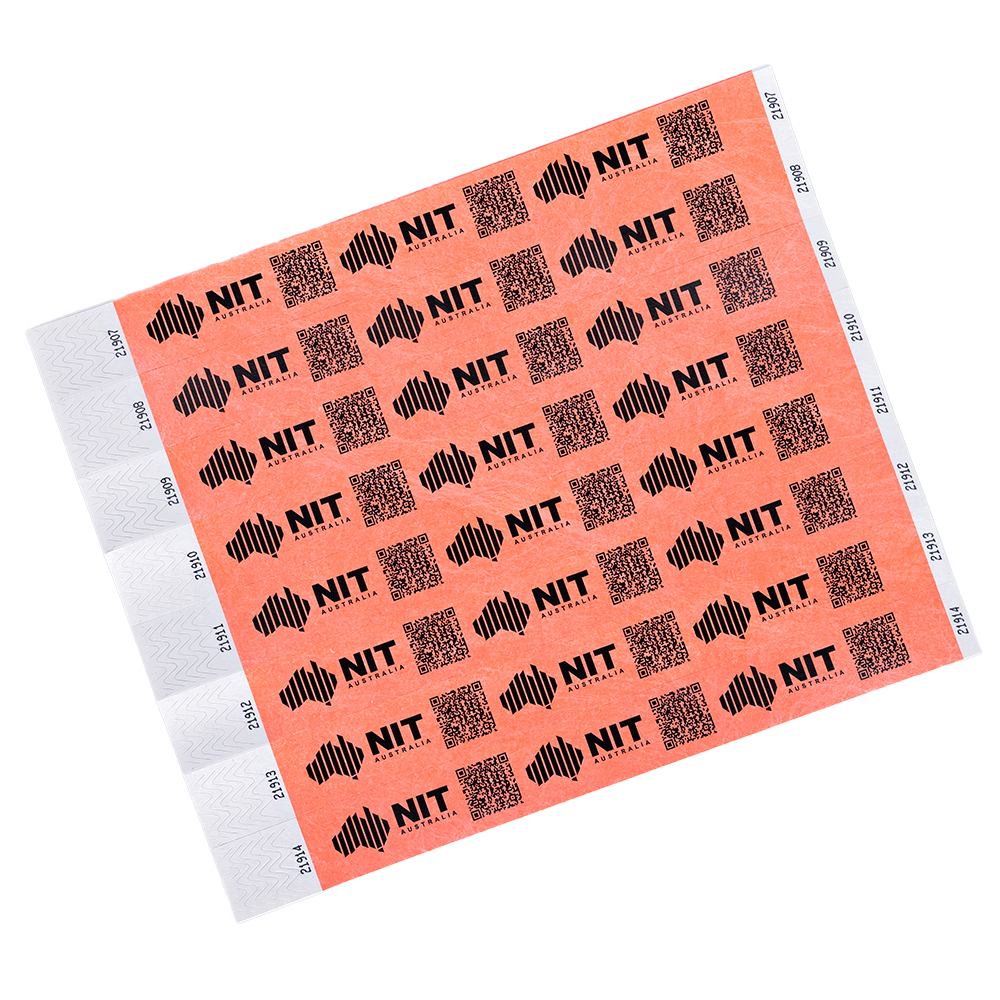
Tyvek is naturally water-resistant and can withstand the effects of water. It meets the British Standard 5609, meaning it is equally as strong wet or dry.
For day events, where splashes of water, or rain, are likely, Tyvek can perform well. They are considered all-weather wristbands and can be used as waterproof event bands.
However, if it is fully submerged, the ink can start to fade. Because the material is not flexible, they are also difficult to take off and do not allow you to fully dry underneath the wristband.
If you are in search of a water-proof wristband for day events, The Wristband Co. offers eco-friendly recycled-polyester wristbands that are much more durable under harsh wet weather conditions. They are popular amongst festivals and other event organisers.
Silicone wristbands are great for water-based events that last more than a day. Their hydrophobic properties make them fully waterproof. The wristbands’ water-repellent nature, along with their flexibility, means they are easy to slip on and off during water-based events.
Silicone is best for water-based events or events where multiple days of water exposure are suspected, as it is more durable and comfortable.
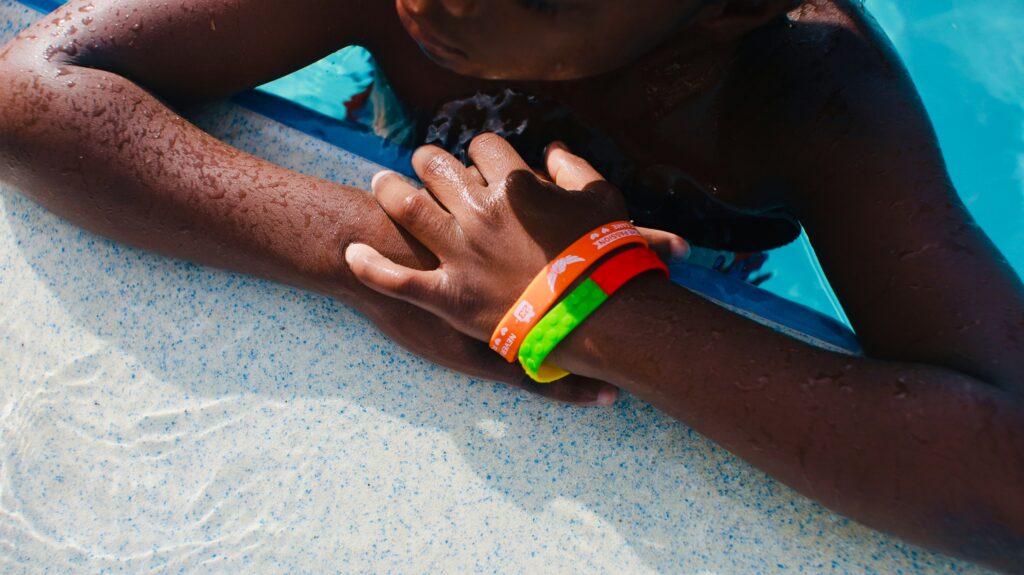
Tyvek wristbands are lightweight, and their flexibility makes them comfortable for all-day wear.
However, in wet, moist, or humid conditions their lack of breathability makes moisture management difficult. Whilst their design means that they cannot easily be removed and put back on is great for event ticketing solutions, moisture can become trapped, and cause skin irritation if worn over many days.
If you do opt for Tyvek bands for your multi-day event, it may be best to offer attendees a replacement band after a couple of days to ensure comfort.
Silicone is considered to be slightly more skin-friendly. Their elasticity allows them to be slipped on and off and allows for better breathability. This is great for sporting events, or events where water is involved, as it lets people take the bands off, dry, and slip them back on.
Their natural softness and ergonomic design also make them more comfortable for long-term use.
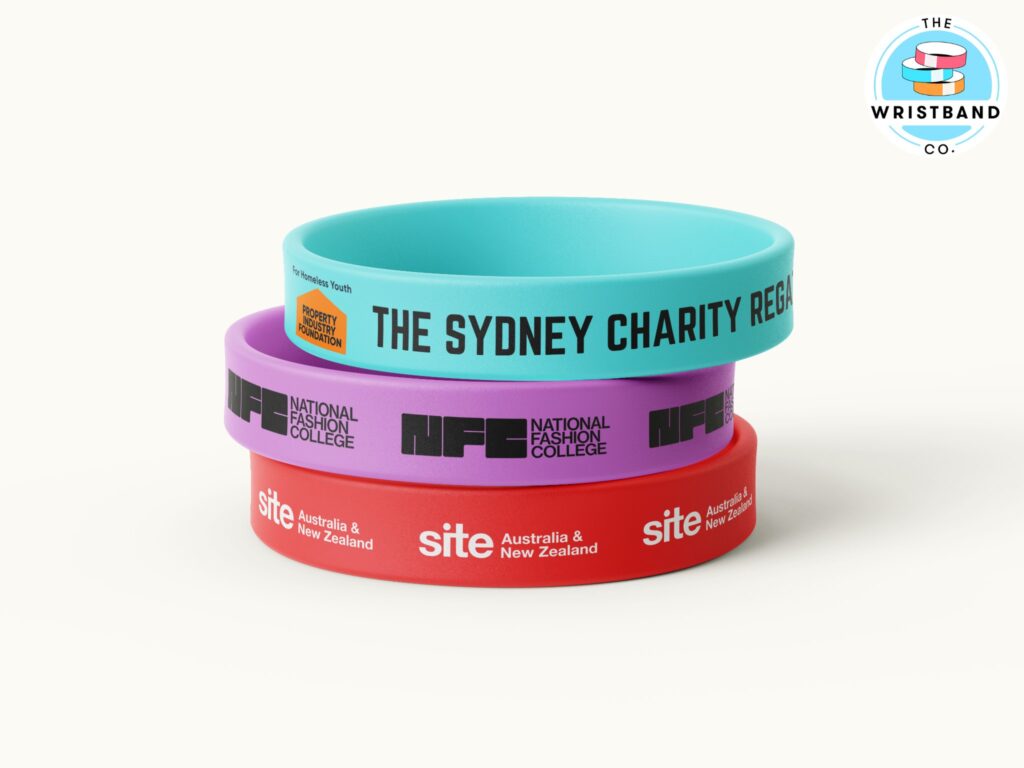
Customising Tyvek wristbands is relatively simple. There are many colour options and printing designs that can be put on these wristbands. The design options are limitless and are simple to use.
Here at The Wristband Co, our full colour designs are limitless and allow for unique designs. Examples of what can be achieved with our Tyvek wristbands can be found on our Instagram page, where we have helped design wristbands for all occasions and events.
At the Wristband Co., we specialise in unique designs, and highly detailed silicone prints.
Like Tyvek, a wide range of colours can be used as part of your customisation process. On our silicone wristbands, we offer any PMS (pantone matching system) colours, for example. You can select a custom Pantone colour from our silicone wristbands designer, however, if you’re looking for a specific shade, contact us, and we can assist you.
We can also screen print highly detailed images, photos and logos, allowing for the highest resolution and detail on your wristbands. If you’re looking for highly detailed designs that are more cost-effective than debossed silicone wristbands, contact us to see our full range of services. We’ll guide you through the process, and discuss the various options we have to meet your goals.
Our silicone wristbands can also be further customised using tools such as moulding, embossing, and debossing, for example. This makes them ideal for awareness wristband campaigns and other cause-related marketing with wristbands.
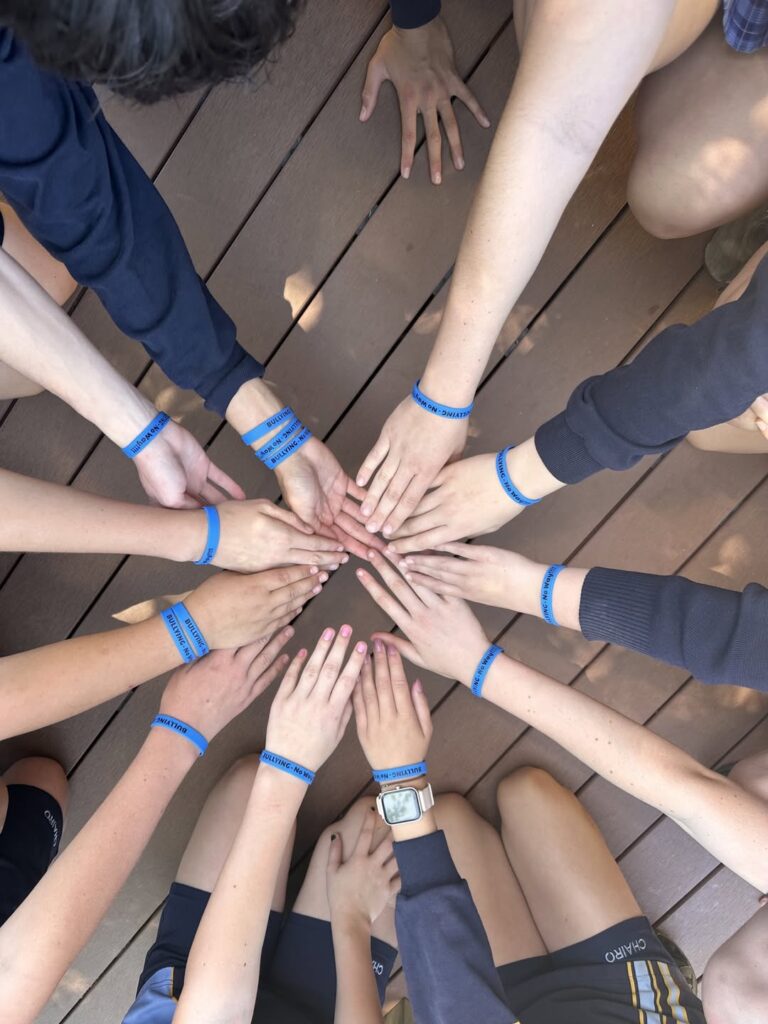
Tyvek is generally best for single-day events. They are considered disposable wristbands, because of their shorter durability. Their cost-effectiveness makes them popular for single, or multi-day events but less popular for purely marketing purposes.
Tyvek wristbands last for a couple of days.
Silicone is excellent for multi-day festivals, long-term promotions, and souvenirs. Reusable wristbands are popular among schools and other educational institutions, which use them for event management, promotions, and prizes.
Silicone wristbands last for years and are great for long-term brand visibility, fundraising campaigns and to achieve a sense of community.
In schools and universities, for example, silicone wristbands can be used as identifiers, and are often equipped with NFC technology to help aid with entry into certain locations such as libraries, gyms or cafeterias.
Tyvek is the go-to option when it comes to security and access control ticketing methods. Tyvek has a tamper evident design which makes them non-transferable. This makes them the standard for ticketing systems in day events such as bar entry, festivals and sporting events. RFID chips can also be added to Tyvek wristbands, providing an additional layer of security and generating valuable data to large-scale event organisers.
Silicone wristbands are easy to slip on and off, and whilst this makes them great in terms of sustainability and comfort, they are less suitable for ticketing systems.
Security options offered by The Wristband Co. include RFID and NFC technology, which help with both counterfeit prevention and access control. RFID, or Radio Frequency Identification allows for tracking across larger areas. This long-range tracking helps organise larger events and aids with crowd management, tracking attendee movement, and can even be used to detect unauthorised access into certain event areas.
Whereas NFC, or Near Field Communication is great for short distance communication and allows event organisers to scan and identify ticket holders at certain access points, for example.
If your event requires this, The Wristband Co. should be contacted directly for more information.
Tyvek is cheaper to produce and is more cost-effective for day events. Along with the cheaper production cost, the customisation methods are simple and allow for costs to be kept down.
There are often discounts on bulk pricing, making them great for larger events and cost-effective admission solutions.
Silicone is a premium product that is long-lasting and has a greater return on investment when used for advertising and marketing purposes. Because the material cost of rubber-like polymer is greater than Tyvek, and certain moulding processes are more complicated, the cost of silicone wristbands is higher compared to Tyvek.
Whilst the upfront cost is greater, these wristbands last years, making the return greater in the long run.
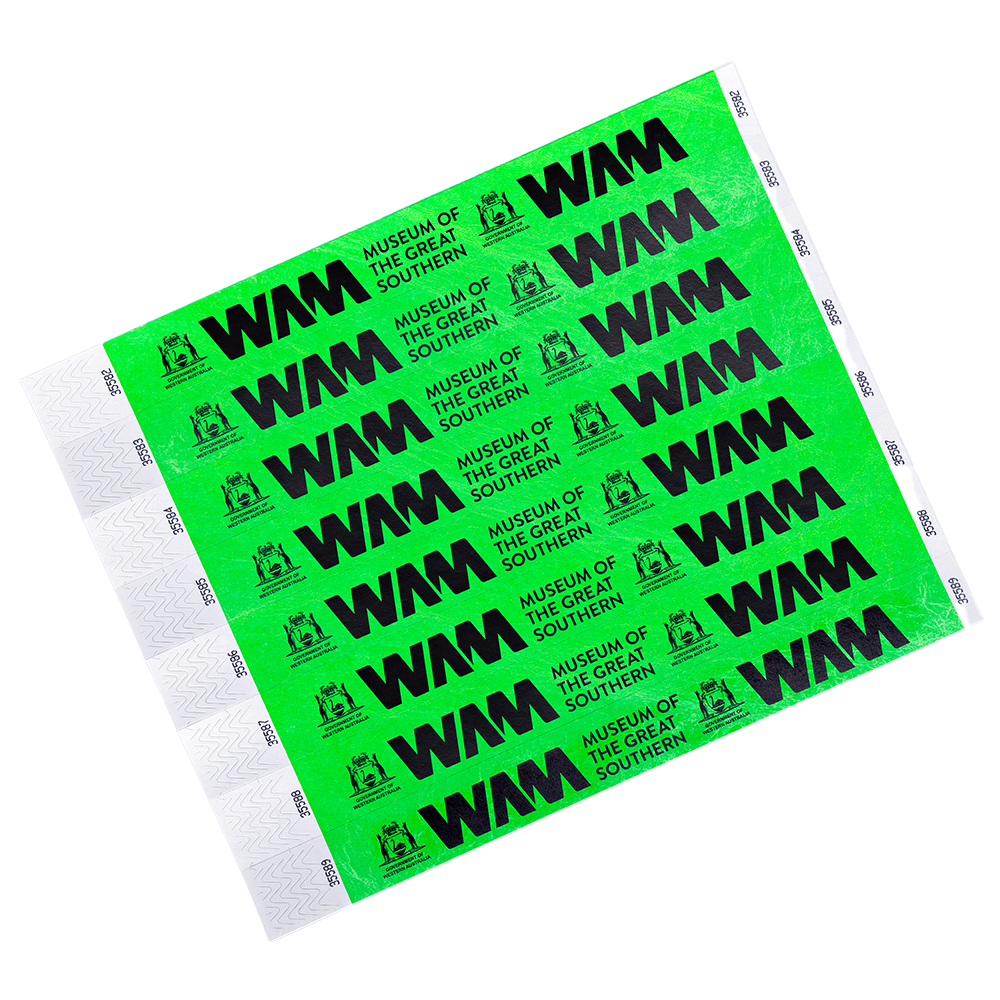
Whilst Tyvek wristbands have a shorter life span, their recyclability helps in terms of waste reduction and sustainable event management. These wristbands can be recycled at centres that recycle flexible HDPE products. We also offer a Tyvek take-back program in partnership with TerraCycle.
Silicone is highly durable and can be used over and over again. This helps to reduce your carbon footprint and makes this one of the most eco-friendly materials when it comes to waste reduction.
Whilst silicone is non-biodegradable, it is non-toxic, meaning it does not release harmful chemicals when it breaks down.
It can also be recycled in some plants. If sustainability is something your brand highlights in promotions, silicone wristbands are an appropriate choice.
Tyvek wristbands are tear-resistant paper-like wristbands often used for ticketed events as identification. Due to their design, tamper resistance, and low mass production cost, they are best used for a single or, at most, multi-day event.
On the other hand, silicone wristbands are much more durable and comfortable to wear for many days. Their lifespan is years long, and they are great for marketing, sponsorship visibility, and fundraising campaigns. They can be customised in detail and are popular amongst organisers and schools in particular.
If you’d like to speak to one of our event experts about the use of wristbands and further explore which option is right for you, you can contact us at 08 8363 4850 or email [email protected].


Join our mailing list to receive product information, endless inspiration and 10% off your next order!
Monday – Friday 8:30 AM-8:30 PM
Saturday 10:00 AM-5:00 PM
Sunday CLOSED
38 Little Rundle Street Kent Town SA 5067
08 8363 4850
ABN: 62 239 772 879
The Wristband Co. is located on the traditional lands for the Kaurna people, and we respect their spiritual relationship with their Country. We also acknowledge the Kaurna people as the custodians of the Adelaide region and that their cultural and heritage beliefs are still as important to the living Kaurna people today.
Payments Accepted